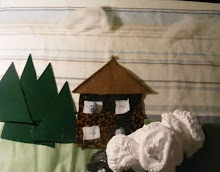The next piece that we did after the audience research was our thriller treatment. Jasmine Dinnage wrote our thriller treatment. This Thriller treatment is primarily our brainstorm of ideas for the storyline of our film. After this I created the shot list, the shot list consisted of all the shots that we would have to take on the days that we had the camera and ready to shoot. The shot list was then passed on to Yvonne Frosdick to draw the storyboard this was done to start to see what the film would start to look like, also to be able to see if some of the shots in the sequence would work properly and whether it would be up to our standards.
Our Preliminary task was a huge wake up call, showing us that editing a film, even a short film well, was very time consuming. Secondly creating the preliminary task gave me experience with the editing software (Premier Elements) and filming itself. I learnt how to manage a good tracking shot, panning shot, high angle shot and many other shots. The editing process of the preliminary task was very difficult to get the grasp of as I was new to this programme but by the time we had finished editing, I was fairly fluent in editing. Further more the process before editing and filming such as story boards and shot lists became simple and straight forward by the time we came to do our thriller production. Overall the Preliminary task became a useful experience as it made our individual organisation skills and filming intelligence more efficient.
During the production of our thriller we were assigned to work in groups, at the beginning of the production we worked well together giving lots of ideas to each other for the treatment and the shot list and also the story board. The treatment was contributed by all of us with ideas. (Jasmine Dinnage, Yvonne Frosdick and me) the treatment was written by Jasmine Dinnage, The shot list was created and written by me, and the story board was done by Yvonne. The Location Shots were taken by jasmine and I, the document about location shots and characters was drawn up by me. The costumes and props were written up by jasmine Dinnage. Jasmine found two pieces of music that were used in our thriller that I edited. What I think we could have done better would be our team organisation and communication skills as we didn’t all see eye to eye at some points during the creation. Also if we had planned the film better we would have had an almost effortless time filming. On the other hand this production has turned out very well and came from, passion and pure determination, to get it completed and completed well. The preliminary task taught me to plan.














.png)
